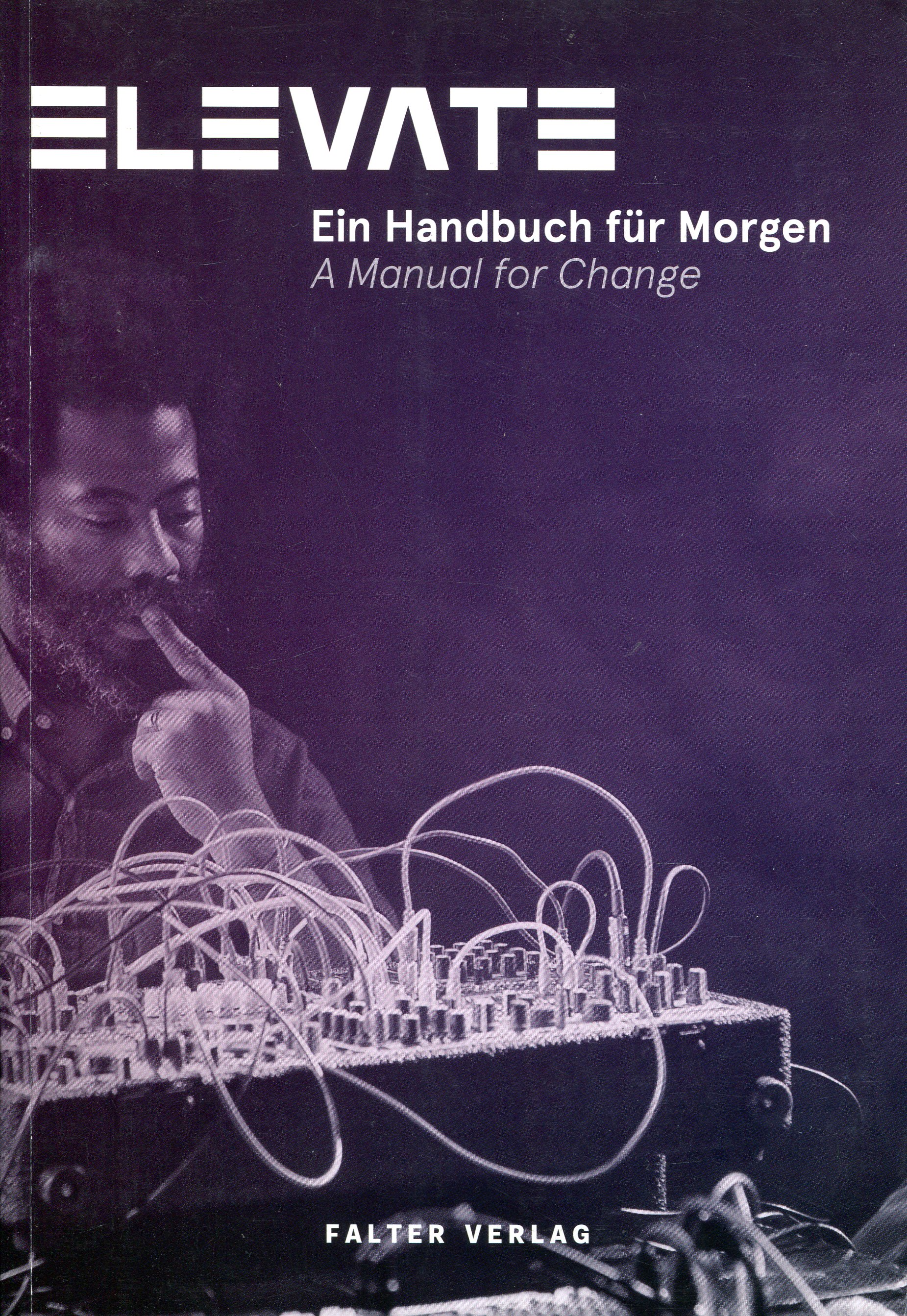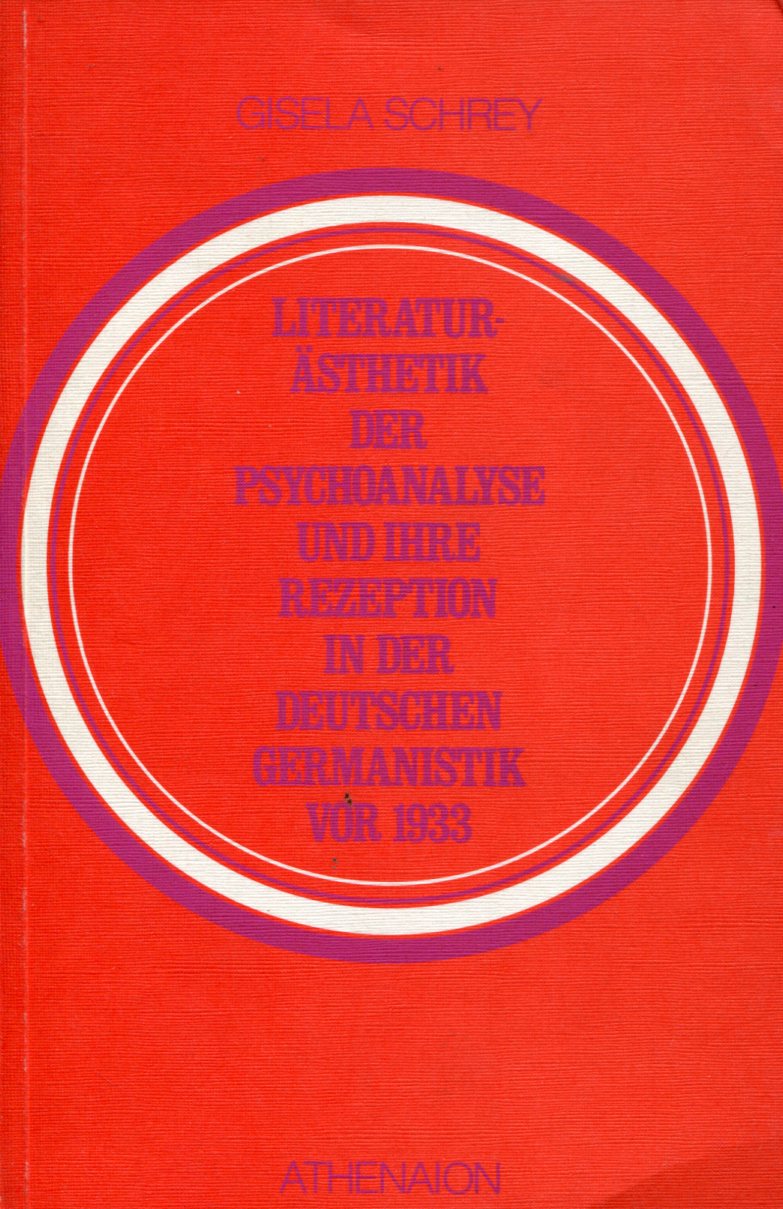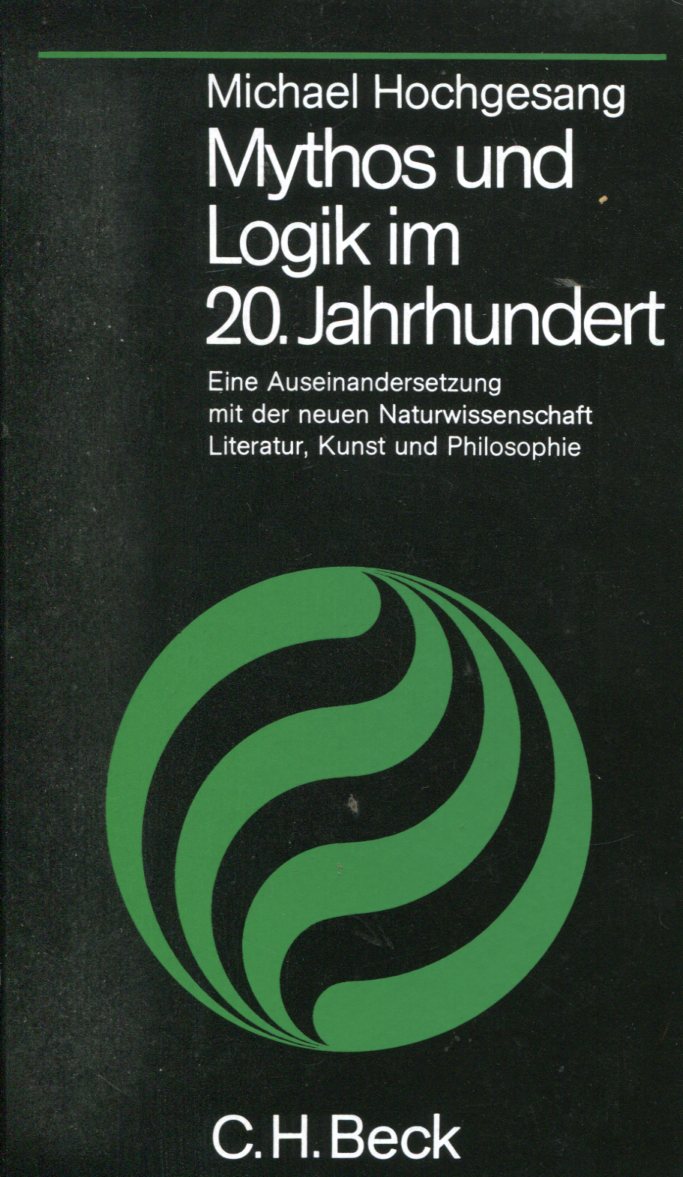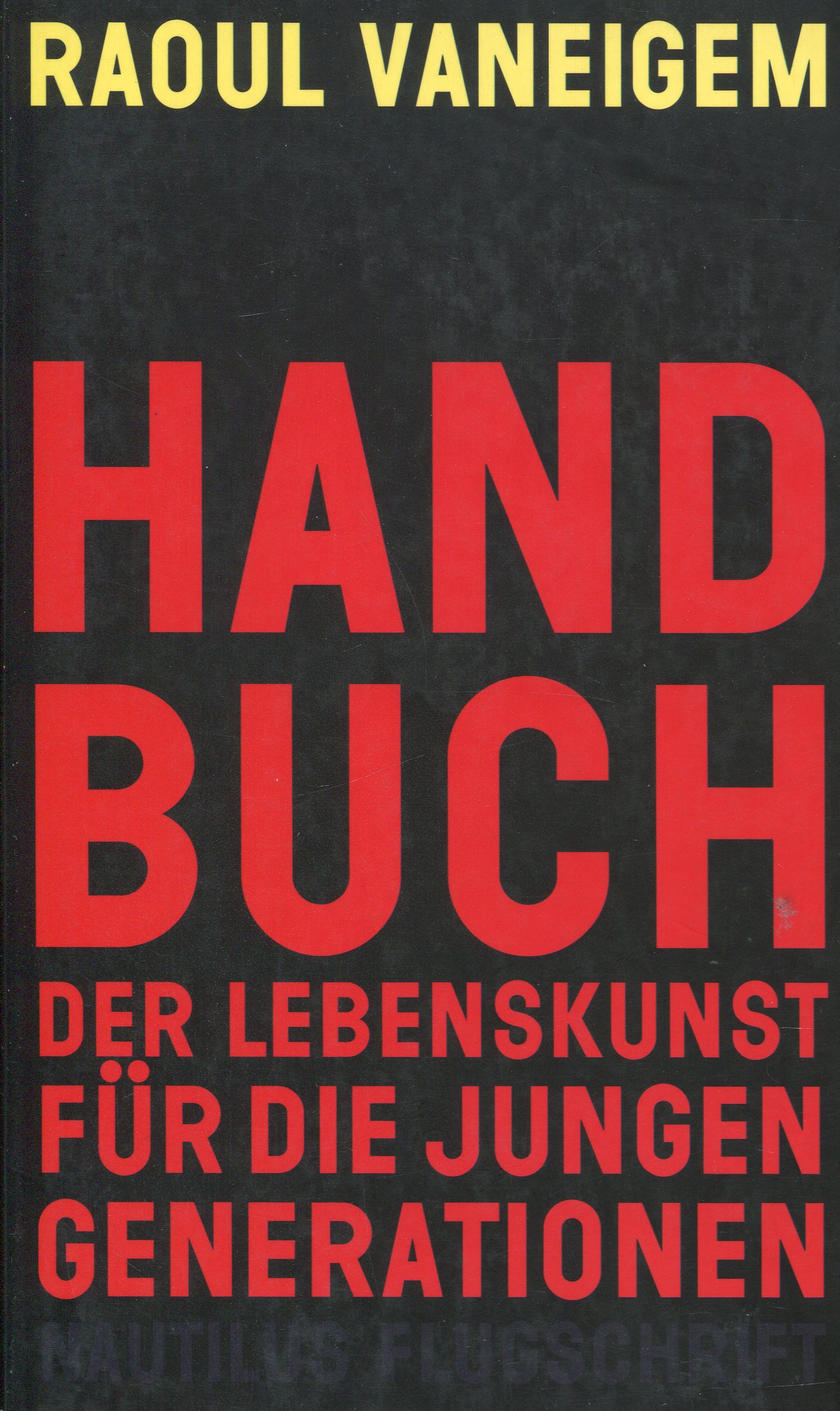Bookshop

Albanien - Renault-Vilvorde - Bergarbeiter in Bonn - Kritik des Kapitals = Kritik der Arbeit - Klassenzusammensetzung - Textilindustrie im Veneto

EIN HANDBUCH FÜR MORGEN / A MANUAL FOR CHANGE Mit kreativen Ideen und praktischen Beispielen die Welt verändern? Künstlerische Mittel und kritische Reflexion mit produktivem Engagement verbinden? Das Ganze dann auch noch solidarisch, demokratisch und ökologisch wertvoll? Wie das gehen könnte, verraten in diesem Buch engagierte Persönlichkeiten und zivilgesellschaftliche Initiativen aus aller Welt. Die Beschreibung konkreter Zukunftsvisionen zu Themen wie Klimawandel, solidarische Ökonomie, Medien und Technologie steht in diesem Sammelband ebenso im Zentrum wie brandaktuelle Analysen zur politischen Lage einer Welt im Umbruch. Welche Rolle dabei zeitgenössische Musik, experimentelle Kunst und avancierte Clubkultur spielen, diskutieren neben Gastautor*innen auch Künstlerinnen und Künstler. Mit Beiträgen von Noam Chomsky, Amy Goodman, Johan Galtung, Vandana Shiva, Jacob Appelbaum, Polly Higgins, Percy Schmeiser, Silke Helfrich, Nafeez Ahmed, Kathrin Röggla, The Yes Men, Shoshana Zuboff, Bill McKibben, uvm.
Guter bis sehr guter Zst.

Guter Zst.
Get ready for Maximum Rocknroll #392! It’s the January 2016 issue, and we’re starting off the new year with style: Philadelphia’s BLANK SPELL riff on their irreplicable and twisted brand of hardcore and contemplate punk worldwide, and Mitch Cardwell lands an interview with ANDY HUMAN, who dishes on survival skills in the Bay Area reptoid reality. On top of that, Julaya from G.L.O.S.S. wrote an epic of a tour diary spanning the Olympia hardcore band’s six week cross-continental voyage this Fall. We also got an interview with Detroit label Salinas Records on their relationship with the city and punk integrity; a complete history of Toronto’s short-lived yet impactful DIY venue S.H.I.B.G.B.’s; East Anglian hardcore totems VOLUNTEERS; TEX FOX, a hardcore punk provocateur out of Beirut, Lebanon; and a profile of ROOM 101, New Orleans’ busiest one-man band. Oh, let’s not forget: an announcement of our Still Not Quiet on the Western Front fest (February 11-14, save the date!), photo spreads from London’s Static Shock Weekend and the Collective Delusion/Mass Hysteriaexhibition in Austin, another round of contributions from your favorite and most hated columnists alike, and an exceptionally loaded reviews section (in which many of this year’s best records are covered). Pick this one up, it’s a must-read.

We Called Each Other Comrade is a great book to read within the context of contemporary activist discussions on the construction of radical institutions; parallel social, economic and political structures that can challenge dominant systems of power and injustice. Both an exhaustive study and also including narrative elements, the book, published by PM Press, follows the establishment and nearly century long political trajectory of Charles H. Kerr Publishing Company, a Chicago-based publishing house launched in 1886 by printing Unitarian tracts, evolving over decades into a publishing house voicing the radical ideas around the Industrial Workers of the World (IWW), continuing to publish progressive books and materials well into the 20th century. We Called Each Other Comrade is uniquely interesting book as it illustrates a fascinating example of a progressive project adjusting and changing honestly in concert with deepening and complex relationships with social movements. One key publishing project outlined is the emergence and development of the critically important International Socialist Review, which became a key space for political debates and expression of the American left at the beginning of the 20th century. A magazine that achieved significant national distribution, firmly on the left of the American Socialist Party in the period leading up to World War I, the magazine took a strongly anti-war position and also published texts by writers part of anarchist organizing efforts. Writers who contributed to the project included Mary “Mother” Jones, the Irish-American schoolteacher and labour / community organizer who was a IWW co-founder along with another journal contributor Bill Haywood, a labour organizer involved in some key workers strikes, such as those by the Western Federation of Miners and also the Lawrence textile strike in Massachusetts, moments that continue to define American labour historical identity until now. photo : Lawrence textile strike, 1912, Massachusetts. Aside from the International Socialist Review, the Kerr Publishing Company was also one the first publishing house to translate and make available in the US many key texts by Karl Marx, while also publishing Industrial Socialism by Bill Haywood andFrank Bohn, One Big Union by William Trautmann and also May Walden’s Socialism and the home. Also key to the importance of We Called Each Other Comrade, is that it looks into the major state repression that progressive activists and institutions faced during the violent nationalism of World War I, given that both the International Socialist Review and the Kerr Publishing Company took a strongly anti-war position and fully joined the movement against the American entrance into the killing fields, the book outlining : A vital oppositional voice and institutional center for the prewar American movement’s left wing, Charles H. Kerr & Company could not avoid the storm. It, too, became a target for war-bred harassment and state repression not long after U.S. entry into the fray. The firm survived as well but came away severely injured. The majority of movement publishing ventures did not weather the first year of American involvement. The company belonged to a diverse social and political movement. Extending ideologically and politically from the authentically anarcho-syndicalist elements within the IWW that disavowed politics, that movement spanned a range from those who favored dual strategies of parliamentary campaigns and militant direct action to those who concentrated on gaining stable, respectable electoral strength and office through legal means. The call for class struggle against war, quite distinct from the dissenting voices of various pacifist opponents, clearly marked all factions of the movement as immediate targets as soon as the country became a belligerent. Those deeply opposed to socialism readily took advantage of and used the era’s heightened jingoist and xenophobic sentiment to isolate and hobble the left as treasonous “slackers,” “war resisters,” … “anti-American,” or simply “troublemakers,” The political stances of the various movement groupings up to and well into the war made such attacks inevitable. Outspokenly oppositional on the issue of war and peace, Charles H. Kerr & company would not pass unnoticed. In this section on the war We Called Each Other Comrade details the various legal challenges and draconian legislation passed by US lawmakers that targeted anti-war and left voices including the publishing house, including the banning of Kerr Publishing Company from using US national postal services for significant periods during the war. Also detailed in the book are many of the organizational strategies and frameworks developed by the Kerr Publishing Company, that shifted, adapted and changed over time to respond to shifting political and economic realities. In many ways the Kerr Publishing Company is an example in cooperative economic funding, grassroots crowd-funding from a different era. For these details the book is important for read for current day activists working on, developing and exploring various ideas around models for radical institutions. Kerr Publishing Company is illustrated clearly as a project that can illuminate the possibilities for detail-driven, membership-based organization, while also the limitations faced by such models when under state repression. We Called Each Other Comrade is an important read generally speaking because it illustrates and points to alternative, radical narratives of American history, celebrated in the book’s pages are not politicians and businessmen, but grassroots voices from social movements that were instrumental to the existing legal infrastructure around workers rights that union movements are still fighting to defend. Also the book is a clear illustration on the importance of alternative publishing in establishing a space for counter narratives, a political space for ideas that challenge the authoritarian frameworks of political and economic power. some minor storage wear, hence reduced price!
At the age of 19 in 1902, MacLane published her first book, The Story of Mary MacLane, which sold 100,000 copies in the first month and was popular with young girls, but pilloried by conservative critics and readers. MacLane scandalized people with her memoir and her two subsequent books. She was considered wild and uncontrolled, a reputation she nurtured, and was openly bisexual as well as a vocal feminist. Some critics have suggested that even by today's standards, MacLane's writing is raw, honest, unflinching, self-aware, sensual and extreme. She wrote openly about egoism and her own self-love, about sexual attraction and love for other women, and even about her desire to marry the Devil.Cravan was known as a pugilist, a poet, a larger-than-life character, and an idol of the Dada and Surrealism movements. From 1911 to 1915 he published a critical magazine, Maintenant! (“Now!”) which appeared in five issues. It was gathered together and reprinted by Eric Losfeld in 1971 as J’étais Cigare in the dadaist collection Le Désordre. The magazine was designed to cause sensation: his rough vibrant poetry, and provocative, anarchistic lectures and public appearances (often degenerating into drunken brawls) also earned him the admiration of Marcel Duchamp, Francis Picabia, André Breton, and other young artists and intellectuals.
John Holloway's previous book, Change the World Without Taking Power, sparked a world-wide debate among activists and scholars about the most effective methods of going beyond capitalism. Now Holloway rejects the idea of a disconnected array of struggles and finds a unifying contradiction - the opposition between the capitalist labour we undertake in our jobs and the drive towards doing what we consider necessary or desirable. Clearly and accessibly presented in the form of 33 theses, Crack Capitalism is set to reopen the debate among radical scholars and activists seeking to break capitalism now. John Holloway is a Professor in the Instituto de Ciencias Sociales y Humanidades of the Benemérita Universidad Autónoma de Puebla in Mexico. His publications include Crack Capitalism (Pluto, 2010), Change the World Without Taking Power (Pluto, 2005), Zapatista! Rethinking Revolution in Mexico(co-editor, Pluto, 1998) and Global Capital, National State and The Politics of Money (co-editor, 1994).

Endnotes is a communist theoretical journal produced by a discussion group of the same name based in Britain and the US Issue 4 contents include; 20th Century Balance Sheet, Black Lives Matter, Balkan Spring, A Suburban Vendée, Abject Subjects
This is the first ever English-language anthology collecting texts and documents from the still little-known Scandinavian part of the Situationist movement. The book covers over three decades of writing, from Asger Jorn’s Luck and Chance published in 1953, to the statements of the Situationist Antinational set up by Jens Jørgen Thorsen and J.V. Martin in 1974. The writings collected gravitate around the year 1962 when the Situationist movement went through it’s most dynamic and critical moments, and the disagreements about the relationship between art and politics came to a culmination, resulting in exclusions and the split of the Situationist International. The Situationists did not win, and the almost forgotten Scandinavian fractions even less so. The book broadens the understanding of the Situationist movement by bringing into view the wild and unruly activities of the Scandinavian fractions of the organisation and the more artistic, experimental, and actionist attitude that characterised them. They did, nevertheless, constitute a decisive break with the ruling socio-economic order through their project of bringing into being new forms of life. Only an analysis of the multifaceted and often contradictory Situationist revolution will allow us to break away from the dull contemplation of yet another document of Debord’s archive or yet another drawing by Jorn. There is a lot to be learned from the history of revolutionary failure. It is along these lines that this book points forward beyond the crisis-ridden capitalist order that survives today. Texts by: Asger Jorn, Jørgen Nash, Jens Jørgen Thorsen, Bauhaus Situationniste, Jacqueline de Jong, Gordon Fazakerley, Gruppe SPUR, Dieter Kunzelman, J.V. Martin, and Guy Debord. Translated by: Peter Shield, James Manley, Anja Buchele, Matthew Hyland, Fabian Tompsett, and Jakob Jakobsen. Bio: Mikkel Bolt Rasmussen is an art historian and political theorist. He is associate professor at the University of Copenhagen and has published books and articles on the revolutionary tradition and modern art. Jakob Jakobsen is an artist and political organizer. He ran the Copenhagen Free University, cofounded the artist run TV station tvtv and has participated in exhibitions all over the world. 304 pages, 5.75 x 8
The truth behind the legend of the heroic guerilla, Ernesto Che Guevara. A Kaleidoscope reprint of a Red Lion Press publication from Montreal 1997

Wanderung, Flucht und Arbeit Willkommenskultur: kümmern oder kämpfen? Nur Winken ist nicht genug – Willkommensinitiative Griechenland: Flüchtlinge als Verhandlungsmasse der Regierung Which side are you on? Thesen von einem Kongress in Potsdam Zuhälterein – das Caporalato und sein Umfeld Italien: Wie ArbeitsmigrantInnen für Verbesserungen in einer ganzen Branchen kämpfen. Zum Film »Die Angst wegschmeißen« Arbeiten bei Amazon in Polen – Interview Weltarbeiterklasse Update Buchbesprechung Immanuel Ness: Southern Insurgency Iran: Keine Ruhe nach dem Atom-Deal Zwei Schritte vor, einer zurück. Wilde Streiks in der türkischen Autoindustrie Potosí/Bolivien: An den Grenzen des extraktiven Entwicklungsmodells Mexiko – USA: Neue Kämpfe im Drogenkrieg-Kapitalismus China: Wirtschaft am Abgrund Kurze Chronologie der Kämpfe der chinesischen Arbeiterklasse Thesen zum Klassenkampf in China Ein rein chinesischer Crash? Buchbesprechung: Lu Zhang: Inside China‘s Automobile Factories. Südafrika: »Students must fall« Zuwanderung und NSU – Neues vom Tiefen Staat Buchbesprechungen: Drei Bücher zum NSU von Wolfgang Schorlau, Wolf Wetzel und Hajo Funke Ausnahmezustand und »Terrorfrei«:»Ein Teil dieser Antworten würde die Bevölkerung verunsichern«Haben sie die Lage wirklich im Griff? (Frankreich im Ausnahmezustand)»Eure Kriege – unsere Toten« Wenn die Kohlenstoffblase platzt Die teuerste Rückrufaktion Riots in den USA: Krieg der Armen gegen die Armen? Buchbesprechung Sven Beckert: King Cotton Buchbesprechung Alice Goffman: On the run. Die Kriminalisierung der Armen in Amerika

Antifaschistisches Info Blatt Nr. 109 - Welcome?

Papier nachgedunkelt, sonst gut

gut

Guter Zst.

Sehr guter Zst. Als Mängelexpl. markiert

Guter Zst. EA 1965

Raoul Vaneigem Handbuch der Lebenskunst für die jungen Generationen NeuauflageBroschur, 320 Seiten € (D) 19,90ISBN 978-3-89401-584-8 Erschienen Ende August 2008 Inhalt | Autor | Pressestimmen | Leseprobe Inhalt Diese neuartige »Fibel des Klassenkampfes« erschien 1967 mit einem Skandal und wurde umgehend zum meistgeklauten Buch Frankreichs. Mit leidenschaftlicher Subjektivität und radikaler Kritik der bestehenden Verhältnisse verknüpft diese umfassende Kritik der modernen Formen der Entfremdung die Bereiche Politik, Kunst und Alltagsleben zu einer explosiven Mischung, die 1968 zum Ausbruch kam. Ein Schlüsselwerk der aufständischen Geschichte von 1967-68 ist das Handbuch der Lebenskunst. Neben Guy Debords Gesellschaft des Spektakels prägte es die Parolen auf den Mauern und Plakaten des Mai 68.Der poetische, witzige, zornige und radikale Stil Vaneigems ist aus der modernen Gesellschaftskritik nicht mehr wegzudenken. Seine provozierenden Thesen gegen die Verkümmerung der Emotionen, gegen Warengesellschaft und Patriarchat, gegen die ganze Welt der Ökonomie, setzen auf Spontaneität, individuelles Erleben und die Kostenlosigkeit der Bedürfnisse. Die Perspektive der Macht, mit ihrer Hierarchie, Aufopferung und Arbeit, soll umgekehrt werden in eine Perspektive der Selbstbestimmung, Kreativität, Spontaneität und Poesie. Die radikale Subjektivität findet ihre Verwirklichung in der von allen gemachten Geschichte. Zum Autor Raoul Vaneigem, geb. 1934 in Lessines (Belgien), studierte 1952-1956 an der Freien Universität Brüssel. 1961-1970 Mitglied der Situationistischen Internationale, gilt neben Guy Debord und Asger Jorn als ihr einflussreichster Theoretiker. Veröffentlichte 1967 Traité de savoir-vivre à l'usage des jeunes générations (dt. Erstausgabe 1972), 1979 Le Livre des plaisirs (Buch der Lüste, 1984), 1990 Adresse aux vivants sur la mort que les gouverne et l'opportunité de s'en défaire (An die Lebenden, 1998) und ca. 15 weitere Werke (2008 erscheint seine Autobiografie bei Gallimard). Lebt als freier Autor in Belgien.»Eine Welt von Genüssen ist zu gewinnen. Wir haben dabei nichts zu verlieren als die Langeweile!« Raoul Vaneigem

Max Ernst Schnabelmax und Nachtigall Texte und BilderMit einem Vorwort von Heribert BeckerHerausgegeben von Pierre GallissairesKleine Bücherei für Hand und Kopf – Band 38Überarbeitete NachauflageKlappenbroschur, 96 Seiten, illustriert € (D) 12,–ISBN 978-3-89401-488-9 Erschienen Mai 2012 Inhalt | Autor | Pressestimmen Inhalt »Die Geschichte von Max Ernst ist für mehrere Jahrzehnte die Geschichte der europäischen Phantasie.« John Russell »Die Geschichte von Max Ernst ist für mehrere Jahrzehnte die Geschichte der europäischen Phantasie.« John Russell Max Ernst (1891–1976) ist einer der bedeutendsten Maler des 20. Jahrhunderts. In diesem Bändchen beweist er jedoch auch in seinen Schriften großes Talent. Das tief in die verborgenen Bereiche des Menschen und der Wirklichkeit vorstoßende Werk, das er hinterlassen hat, ist von enormer Fülle und großer Vielfalt der Techniken und Ausdrucksweisen. Max Ernst hat sich und seine Arbeit immer wieder in Frage gestellt und die Malerei als nie endende Suche, als geistiges Abenteuer verstanden: »Ein Maler mag wissen, was er nicht will. Doch wehe! wenn er wissen will, was er will! Ein Maler ist verloren, wenn er sich findet. Dass ihm geglückt ist, sich nicht zu finden, betrachtet Max Ernst als sein einziges ›Verdienst‹.« (Der Künstler über sich selbst) Inhaltsverzeichnis Schnabelmax und Nachtgall Zum Autor Der Maler, Bildhauer, Zeichner und Dichter Max Ernst (1891 – 1976) ist einer der wichtigsten Vertreter des Dadaismus und Surrealismus. Früh bricht er mit den konventionellen künstlerischen Techniken und wendet sich konsequent der Anwendung indirekter Arbeitsmethoden zu: Übermalungen, Collage, Frottage (Durchreibeverfahren), Grattage (Abkratzverfahren) oder das Abklatschverfahren dienen der systematischen Befragung der Bereiche "Jenseits der Malerei" (Max Ernst). Pressestimmen »... Versammelt ... Gedichte und Zeichnungen, Druckgraphiken, Biographisches, Poetisches.«Kunst und Bücher




